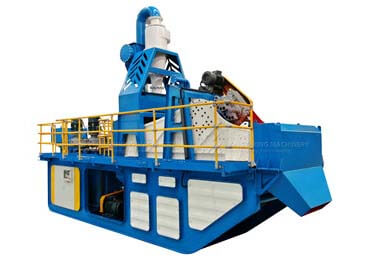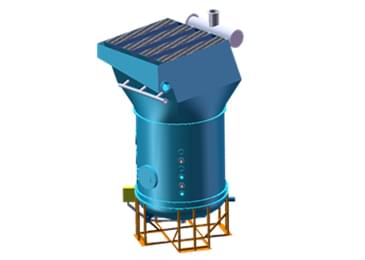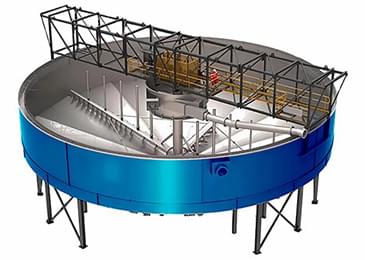Structure composition and working principle of hydrocyclone
2021-12-10
The cyclone has a simple structure, large processing capacity, and high classification efficiency, so it is widely used in classification and concentration operations in concentrators. Studying the principle of hydrocyclones has an important effect on the design of more high-quality cyclones. The following briefly introduces the principle of hydrocyclones.
Structural composition of hydrocyclone
A conventional hydrocyclone is composed of a feed port, a cylinder, a cone, an overflow port, and sand settling port.
Principle of Hydrocyclone
The pulp is fed into the cylindrical cylinder of the cyclone at a feed port along the tangential direction under a certain pressure, after which, the pulp rotates around the inside of the cylinder. Coarse particles in the slurry are subjected to greater gravity and inertial centrifugal force, and move downwards along the wall of the cylinder, forming an external spiral flow, and finally discharged from the sedimentation port. Because the fine particles in the slurry are subject to relatively small gravity and inertial forces, and the continuous feeding and downward movement of the slurry are restricted by the cone-shaped cylinder, the fine particles and the liquid medium rotate and move upwards along the center of the cylinder to form an internal spiral flow. Finally, it is discharged from the overflow port.
The velocity of each particle in the hydrocyclone can be decomposed into three directions, namely tangential, axial, and radial. Research scholars pointed out that along the radial direction of the annular space around the overflow pipe, the tangential velocity does not change much. In most of the cones, the tangential velocity increases with the decrease of the radius, and when the tangential velocity reaches 0.5 to 0.7 times the radius of the overflow tube, the tangential velocity decreases with the decrease of the radius. In the outer space of the overflow pipe, the radial velocity fluctuates up and down at zero speed. In the cone, the same tangential velocity, increases with the decrease of the radius, except that the upper part of the cone is close to the wall of the vessel. Reduce the phenomenon of radial velocity reduction. In the outer space of the overflow pipe, the axial velocity presents an asymmetric parabola; in the cone part, it gradually decreases along the radial direction, and there is a zero-speed envelope surface.
While deeply understanding the principle of hydrocyclones, LZZG has extensively absorbed advanced technologies at home and abroad, studied and researched with great concentration, and produced XC series hydrocyclones with higher classification efficiency, longer service life, and more favorable cyclones prices.







